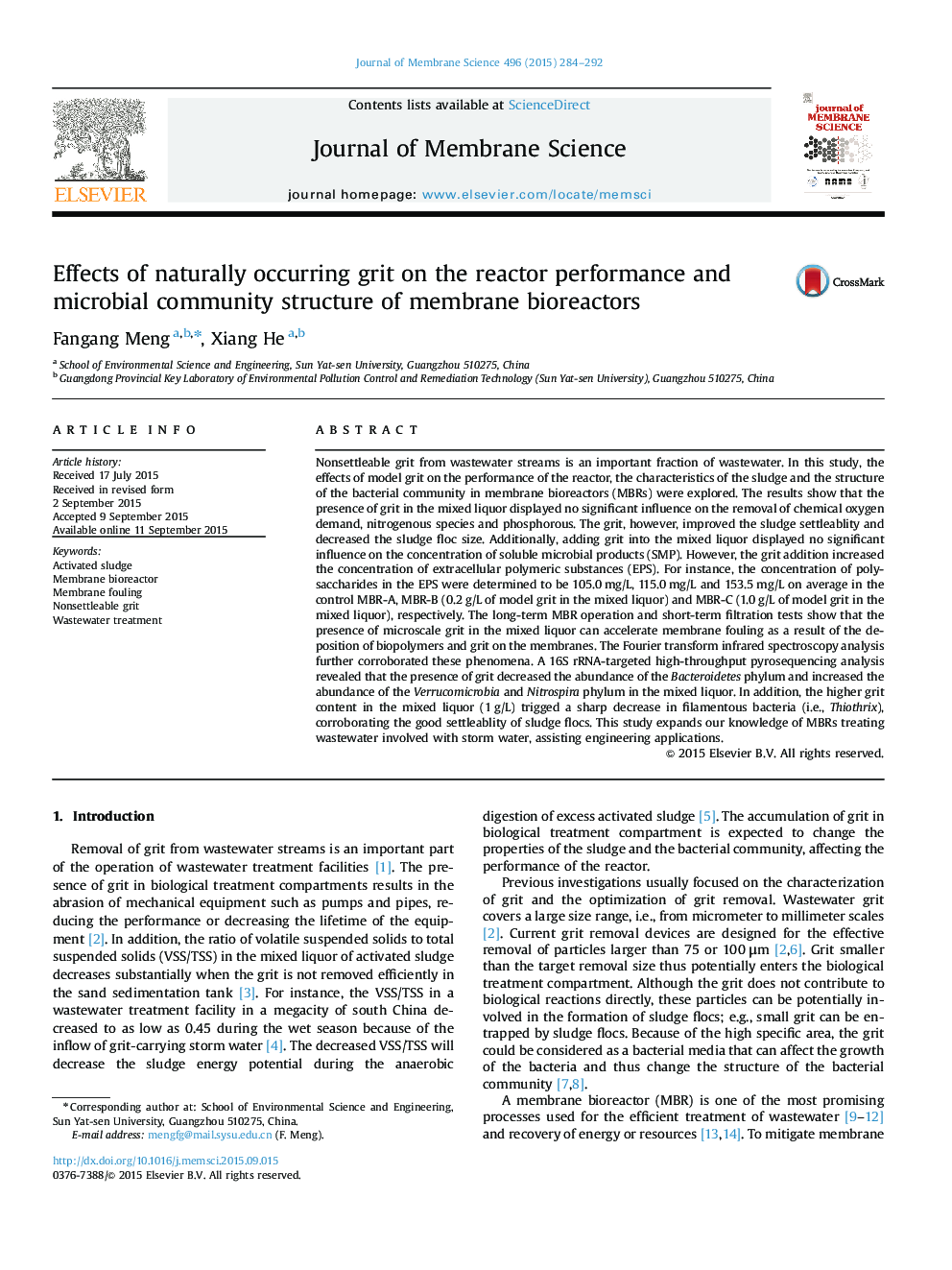| کد مقاله | کد نشریه | سال انتشار | مقاله انگلیسی | نسخه تمام متن |
|---|---|---|---|---|
| 632871 | 1456003 | 2015 | 9 صفحه PDF | دانلود رایگان |
• The role of nonsettleable grit in the performance of a MBR was investigated.
• The grit in the mixed liquor displayed little influence on nutrient removal.
• The grit improved the sludge settleablity and decreased the sludge floc size.
• The presence of grit in the mixed liquor increased the membrane fouling rates.
• The grit induced significant changes in the bacterial community structure.
Nonsettleable grit from wastewater streams is an important fraction of wastewater. In this study, the effects of model grit on the performance of the reactor, the characteristics of the sludge and the structure of the bacterial community in membrane bioreactors (MBRs) were explored. The results show that the presence of grit in the mixed liquor displayed no significant influence on the removal of chemical oxygen demand, nitrogenous species and phosphorous. The grit, however, improved the sludge settleablity and decreased the sludge floc size. Additionally, adding grit into the mixed liquor displayed no significant influence on the concentration of soluble microbial products (SMP). However, the grit addition increased the concentration of extracellular polymeric substances (EPS). For instance, the concentration of polysaccharides in the EPS were determined to be 105.0 mg/L, 115.0 mg/L and 153.5 mg/L on average in the control MBR-A, MBR-B (0.2 g/L of model grit in the mixed liquor) and MBR-C (1.0 g/L of model grit in the mixed liquor), respectively. The long-term MBR operation and short-term filtration tests show that the presence of microscale grit in the mixed liquor can accelerate membrane fouling as a result of the deposition of biopolymers and grit on the membranes. The Fourier transform infrared spectroscopy analysis further corroborated these phenomena. A 16S rRNA-targeted high-throughput pyrosequencing analysis revealed that the presence of grit decreased the abundance of the Bacteroidetes phylum and increased the abundance of the Verrucomicrobia and Nitrospira phylum in the mixed liquor. In addition, the higher grit content in the mixed liquor (1 g/L) trigged a sharp decrease in filamentous bacteria (i.e., Thiothrix), corroborating the good settleablity of sludge flocs. This study expands our knowledge of MBRs treating wastewater involved with storm water, assisting engineering applications.
Figure optionsDownload high-quality image (160 K)Download as PowerPoint slide
Journal: Journal of Membrane Science - Volume 496, 15 December 2015, Pages 284–292
